Company Details
panasonic
28,891
300,667
335
holdings.panasonic
40
PAN_1245118
Completed

Panasonic Company CyberSecurity Posture
holdings.panasonicFounded in 1918, and today a global leader in developing innovative technologies and solutions for wide-ranging applications in the consumer electronics, housing, automotive, industry, communications, and energy sectors worldwide, the Panasonic Group switched to an operating company system on April 1, 2022 with Panasonic Holdings Corporation serving as a holding company and eight companies positioned under its umbrella. The Group reported consolidated net sales of 8,496.4 billion yen for the year ended March 31, 2024.
Company Details
panasonic
28,891
300,667
335
holdings.panasonic
40
PAN_1245118
Completed
Between 700 and 749

 Panasonic Global Score (TPRM)
Panasonic Global Score (TPRM)XXXX

Description: Tech giant Panasonic suffereed a data breach incident during June 2021 to November 2021 after its file server were accessed by an unauthorised party. The hackers infiltrated the servers and accessed sensitive data of job candidates including personal details of the candidates and other business-related information. This was the second incident with Panasonic after attackers had already released 4GB of data they had stolen from Panasonic India in November 2020.
Description: Japanese electronics giant Panasonic suffered from a major security breach after an unidentified threat actor had gained access to its internal network. An internal investigation revealed that the breach had gained access to some information on a file server. The compromised information includes sensitive customer details, employee personal information, Panasonic technical files from the company’s domestic operations. They investigated the incident and took preventive steps.
Description: Panasonic Canada was targeted by the Conti ransomware group recently in February 2021. The attack affected the company's systems, processes, and networks. The firm immediately investigated the incident and contained the malware, cleaned and restored servers, and rebuilt its applications.
Description: Panasonic fell victim to subdomain hijacking by the Hazy Hawk threat group, which exploited misconfigured DNS records to spread malware and perpetrate online scams. The attackers redirected users to malicious sites through abandoned cloud resources, compromising user trust and exposing them to fraudulent activities. The attack emphasizes the critical importance of DNS hygiene and automated monitoring to detect and mitigate such vulnerabilities.
Description: The California Office of the Attorney General reported a data breach involving Panasonic Avionics Corporation on December 22, 2023. The breach, identified on December 30, 2022, involved unauthorized access to systems occurring around December 14, 2022, potentially affecting personal information, including names, contact details, and Social Security numbers. The number of affected individuals is currently unknown.


Panasonic has 56.25% more incidents than the average of same-industry companies with at least one recorded incident.
Panasonic has 56.25% more incidents than the average of all companies with at least one recorded incident.
Panasonic reported 1 incidents this year: 0 cyber attacks, 0 ransomware, 1 vulnerabilities, 0 data breaches, compared to industry peers with at least 1 incident.
Panasonic cyber incidents detection timeline including parent company and subsidiaries

Founded in 1918, and today a global leader in developing innovative technologies and solutions for wide-ranging applications in the consumer electronics, housing, automotive, industry, communications, and energy sectors worldwide, the Panasonic Group switched to an operating company system on April 1, 2022 with Panasonic Holdings Corporation serving as a holding company and eight companies positioned under its umbrella. The Group reported consolidated net sales of 8,496.4 billion yen for the year ended March 31, 2024.

Volex is a global leader in integrated manufacturing for performance-critical applications and a supplier of power products. We serve a diverse range of markets and customers, with particular expertise in cable assemblies, higher-level assemblies, data centre power and connectivity, electric vehic

Sanmina Corporation (Nasdaq: SANM) is a leading integrated manufacturing solutions provider serving the fastest-growing segments of the global Electronics Manufacturing Services (EMS) market. Recognized as a technology leader, Sanmina Corporationprovides end-to-end manufacturing solutions, deliverin
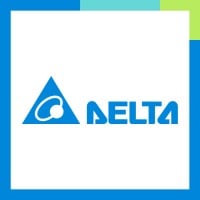
Delta is a global innovative provider of switching power supplies and DC brushless fans, as well as a major source for power management solutions, components, visual displays, industrial automation, networking products, and renewable energy solutions. Delta Group has sales offices worldwide and manu

Galanz Enterprises, founded in September 28th, 1978, is a world-class integrated white goods brand enterprise, and one of the most influential leading enterprises in the Chinese household electrical appliances industry. Galanz has the world's largest microwave oven R&D and manufacturing center, as
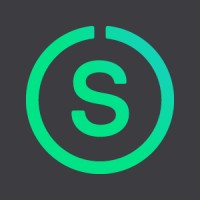
Signify (Euronext: LIGHT) is the world leader in lighting for professionals, consumers, and the Internet of Things. Our Philips products, Interact systems and data-enabled services deliver business value and transform life in homes, buildings and public spaces. In 2023, we had sales of EUR 6.7 billi
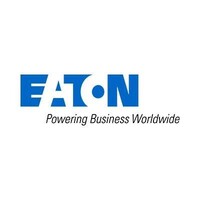
Eaton is an intelligent power management company dedicated to improving the quality of life and protecting the environment for people everywhere. We are guided by our commitment to do business right, to operate sustainably and to help our customers manage power ─ today and well into the future. By c
TE Connectivity is a global industrial technology leader creating a safer, sustainable, productive, and connected future. Our broad range of connectivity and sensor solutions enable the distribution of power, signal and data to advance next-generation transportation, renewable energy, automated fact
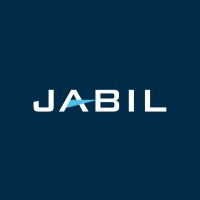
At Jabil (NYSE: JBL), we are proud to be a trusted partner for the world's top brands, offering comprehensive engineering, manufacturing, and supply chain solutions. With over 50 years of experience across industries and a vast network of over 100 sites worldwide, Jabil combines global reach with lo
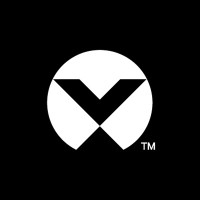
Vertiv (NYSE: VRT) brings together hardware, software, analytics and ongoing services to enable its customers’ vital applications to run continuously, perform optimally and grow with their business needs. Vertiv solves the most important challenges facing today’s data centers, communication networks
.png)
Press Release, 13 November 2025. Panasonic Holdings Corporation has unveiled an upgraded version of its VERZEUSE cybersecurity platform,...
PRNewswire/ -- Panasonic Automotive Systems Co., Ltd. (Headquarters: Yokohama, Kanagawa, Japan; President: Masashi Nagayasu;...
Stratasys announced updates across FDM, SAF, SLA and DLP platforms with new materials and faster printing capabilities.
Reviews News: Panasonic's new 65-inch ShinobiPro 4K Mini LED Google TV impresses with its vibrant Mini LED display, offering deep blacks and...
Wireless security rules tighten in Europe as Panasonic moves early to certify its modules, preparing customers for tougher cybersecurity...
Panasonic Industry Europe confirms wireless modules comply with EN 18031-1:2024, meeting new EU cybersecurity standards.
Panasonic Industry Europe is pleased to confirm alignment of its wireless modules with the newly adopted European RED EN 18031-1:2024.
Microsoft will officially end support for Windows 10 on October 14, 2025. With the UK excluded from Microsoft's free Extended Security...
Panasonic TOUGHBOOK to showcase cutting-edge military solutions at Defence and Security Equipment International (DSEI)

Explore insights on cybersecurity incidents, risk posture, and Rankiteo's assessments.
The official website of Panasonic is https://holdings.panasonic/global/.
According to Rankiteo, Panasonic’s AI-generated cybersecurity score is 736, reflecting their Moderate security posture.
According to Rankiteo, Panasonic currently holds 0 security badges, indicating that no recognized compliance certifications are currently verified for the organization.
According to Rankiteo, Panasonic is not certified under SOC 2 Type 1.
According to Rankiteo, Panasonic does not hold a SOC 2 Type 2 certification.
According to Rankiteo, Panasonic is not listed as GDPR compliant.
According to Rankiteo, Panasonic does not currently maintain PCI DSS compliance.
According to Rankiteo, Panasonic is not compliant with HIPAA regulations.
According to Rankiteo,Panasonic is not certified under ISO 27001, indicating the absence of a formally recognized information security management framework.
Panasonic operates primarily in the Appliances, Electrical, and Electronics Manufacturing industry.
Panasonic employs approximately 28,891 people worldwide.
Panasonic presently has no subsidiaries across any sectors.
Panasonic’s official LinkedIn profile has approximately 300,667 followers.
Panasonic is classified under the NAICS code 335, which corresponds to Electrical Equipment, Appliance, and Component Manufacturing.
Yes, Panasonic has an official profile on Crunchbase, which can be accessed here: https://www.crunchbase.com/organization/panasonic.
Yes, Panasonic maintains an official LinkedIn profile, which is actively utilized for branding and talent engagement, which can be accessed here: https://www.linkedin.com/company/panasonic.
As of November 27, 2025, Rankiteo reports that Panasonic has experienced 5 cybersecurity incidents.
Panasonic has an estimated 9,144 peer or competitor companies worldwide.
Incident Types: The types of cybersecurity incidents that have occurred include Vulnerability, Breach and Ransomware.
Detection and Response: The company detects and responds to cybersecurity incidents through an containment measures with contained the malware, and remediation measures with cleaned and restored servers, remediation measures with rebuilt its applications, and remediation measures with preventive steps..
Title: Panasonic Canada Ransomware Attack
Description: Panasonic Canada was targeted by the Conti ransomware group in February 2021. The attack affected the company's systems, processes, and networks. The firm immediately investigated the incident and contained the malware, cleaned and restored servers, and rebuilt its applications.
Date Detected: February 2021
Type: Ransomware
Threat Actor: Conti ransomware group
Title: Panasonic Data Breach Incident
Description: Tech giant Panasonic suffered a data breach incident during June 2021 to November 2021 after its file server was accessed by an unauthorised party. The hackers infiltrated the servers and accessed sensitive data of job candidates including personal details of the candidates and other business-related information. This was the second incident with Panasonic after attackers had already released 4GB of data they had stolen from Panasonic India in November 2020.
Date Detected: June 2021
Date Resolved: November 2021
Type: Data Breach
Attack Vector: Unauthorized Access to File Server
Title: Panasonic Security Breach
Description: Japanese electronics giant Panasonic suffered from a major security breach after an unidentified threat actor had gained access to its internal network. An internal investigation revealed that the breach had gained access to some information on a file server. The compromised information includes sensitive customer details, employee personal information, Panasonic technical files from the company’s domestic operations. They investigated the incident and took preventive steps.
Type: Data Breach
Threat Actor: Unidentified
Title: Hazy Hawk Subdomain Hijacking Campaign
Description: Hazy Hawk exploits misconfigured DNS CNAME records to hijack subdomains of major organizations and spread malware and scams.
Type: Subdomain Hijacking
Attack Vector: Misconfigured DNS CNAME records
Vulnerability Exploited: Dangling DNS records
Threat Actor: Hazy Hawk
Motivation: Spread malware and perpetrate online scams
Title: Panasonic Avionics Corporation Data Breach
Description: The California Office of the Attorney General reported a data breach involving Panasonic Avionics Corporation on December 22, 2023. The breach, identified on December 30, 2022, involved unauthorized access to systems occurring around December 14, 2022, potentially affecting personal information, including names, contact details, and Social Security numbers. The number of affected individuals is currently unknown.
Date Detected: 2022-12-30
Date Publicly Disclosed: 2023-12-22
Type: Data Breach
Attack Vector: Unauthorized Access
Common Attack Types: The most common types of attacks the company has faced is Breach.
Identification of Attack Vectors: The company identifies the attack vectors used in incidents through Dangling DNS records.

Systems Affected: systemsprocessesnetworks

Data Compromised: Personal details of job candidates, Business-related information
Systems Affected: File Server

Data Compromised: Sensitive customer details, Employee personal information, Panasonic technical files
Systems Affected: File server

Data Compromised: Names, Contact details, Social security numbers
Commonly Compromised Data Types: The types of data most commonly compromised in incidents are Personal Details Of Job Candidates, Business-Related Information, , Sensitive Customer Details, Employee Personal Information, Panasonic Technical Files, , Personal Information and .

Entity Name: Panasonic Canada
Entity Type: Corporation
Industry: Electronics
Location: Canada

Entity Name: Panasonic
Entity Type: Corporation
Industry: Technology

Entity Name: Panasonic
Entity Type: Corporation
Industry: Electronics
Location: Japan

Entity Name: Bose
Entity Type: Corporation
Industry: Consumer Electronics

Entity Name: Panasonic
Entity Type: Corporation
Industry: Consumer Electronics

Entity Name: US CDC
Entity Type: Government Agency
Industry: Health

Entity Name: Deloitte
Entity Type: Corporation
Industry: Professional Services

Entity Name: Panasonic Avionics Corporation
Entity Type: Corporation
Industry: Aviation

Containment Measures: contained the malware
Remediation Measures: cleaned and restored serversrebuilt its applications

Remediation Measures: Preventive steps

Type of Data Compromised: Personal details of job candidates, Business-related information

Type of Data Compromised: Sensitive customer details, Employee personal information, Panasonic technical files
Sensitivity of Data: High

Type of Data Compromised: Personal information
Sensitivity of Data: High
Personally Identifiable Information: NamesContact DetailsSocial Security Numbers
Prevention of Data Exfiltration: The company takes the following measures to prevent data exfiltration: cleaned and restored servers, rebuilt its applications, , Preventive steps, .
Handling of PII Incidents: The company handles incidents involving personally identifiable information (PII) through by contained the malware.

Ransomware Strain: Conti

Lessons Learned: Organizations must focus on DNS hygiene, using automated DNS monitoring tools, and treating misconfigurations as critical vulnerabilities.

Recommendations: Individuals should refuse push notification requests from unfamiliar sites and organizations should use automated DNS monitoring tools integrated with threat intelligence.
Key Lessons Learned: The key lessons learned from past incidents are Organizations must focus on DNS hygiene, using automated DNS monitoring tools, and treating misconfigurations as critical vulnerabilities.
Implemented Recommendations: The company has implemented the following recommendations to improve cybersecurity: Individuals should refuse push notification requests from unfamiliar sites and organizations should use automated DNS monitoring tools integrated with threat intelligence..

Source: TechRadar Pro

Source: California Office of the Attorney General
Date Accessed: 2023-12-22
Additional Resources: Stakeholders can find additional resources on cybersecurity best practices at and Source: TechRadar Pro, and Source: California Office of the Attorney GeneralDate Accessed: 2023-12-22.

Investigation Status: Completed

Entry Point: Dangling DNS records
High Value Targets: Bose, Panasonic, Us Cdc, Deloitte,
Data Sold on Dark Web: Bose, Panasonic, Us Cdc, Deloitte,

Root Causes: Administrative oversight leading to misconfigured DNS CNAME records
Corrective Actions: Automated DNS monitoring and treating misconfigurations as critical vulnerabilities
Corrective Actions Taken: The company has taken the following corrective actions based on post-incident analysis: Automated DNS monitoring and treating misconfigurations as critical vulnerabilities.
Last Attacking Group: The attacking group in the last incident were an Conti ransomware group, Unidentified and Hazy Hawk.
Most Recent Incident Detected: The most recent incident detected was on February 2021.
Most Recent Incident Publicly Disclosed: The most recent incident publicly disclosed was on 2023-12-22.
Most Recent Incident Resolved: The most recent incident resolved was on November 2021.
Most Significant Data Compromised: The most significant data compromised in an incident were Personal details of job candidates, Business-related information, , Sensitive customer details, Employee personal information, Panasonic technical files, , Names, Contact Details, Social Security Numbers and .
Most Significant System Affected: The most significant system affected in an incident was systemsprocessesnetworks and File Server and File server.
Containment Measures in Most Recent Incident: The containment measures taken in the most recent incident was contained the malware.
Most Sensitive Data Compromised: The most sensitive data compromised in a breach were Social Security Numbers, Business-related information, Sensitive customer details, Personal details of job candidates, Panasonic technical files, Employee personal information, Contact Details and Names.
Most Significant Lesson Learned: The most significant lesson learned from past incidents was Organizations must focus on DNS hygiene, using automated DNS monitoring tools, and treating misconfigurations as critical vulnerabilities.
Most Significant Recommendation Implemented: The most significant recommendation implemented to improve cybersecurity was Individuals should refuse push notification requests from unfamiliar sites and organizations should use automated DNS monitoring tools integrated with threat intelligence..
Most Recent Source: The most recent source of information about an incident are California Office of the Attorney General and TechRadar Pro.
Current Status of Most Recent Investigation: The current status of the most recent investigation is Completed.
Most Recent Entry Point: The most recent entry point used by an initial access broker was an Dangling DNS records.
.png)
Angular is a development platform for building mobile and desktop web applications using TypeScript/JavaScript and other languages. Prior to versions 19.2.16, 20.3.14, and 21.0.1, there is a XSRF token leakage via protocol-relative URLs in angular HTTP clients. The vulnerability is a Credential Leak by App Logic that leads to the unauthorized disclosure of the Cross-Site Request Forgery (XSRF) token to an attacker-controlled domain. Angular's HttpClient has a built-in XSRF protection mechanism that works by checking if a request URL starts with a protocol (http:// or https://) to determine if it is cross-origin. If the URL starts with protocol-relative URL (//), it is incorrectly treated as a same-origin request, and the XSRF token is automatically added to the X-XSRF-TOKEN header. This issue has been patched in versions 19.2.16, 20.3.14, and 21.0.1. A workaround for this issue involves avoiding using protocol-relative URLs (URLs starting with //) in HttpClient requests. All backend communication URLs should be hardcoded as relative paths (starting with a single /) or fully qualified, trusted absolute URLs.
Forge (also called `node-forge`) is a native implementation of Transport Layer Security in JavaScript. An Uncontrolled Recursion vulnerability in node-forge versions 1.3.1 and below enables remote, unauthenticated attackers to craft deep ASN.1 structures that trigger unbounded recursive parsing. This leads to a Denial-of-Service (DoS) via stack exhaustion when parsing untrusted DER inputs. This issue has been patched in version 1.3.2.
Forge (also called `node-forge`) is a native implementation of Transport Layer Security in JavaScript. An Integer Overflow vulnerability in node-forge versions 1.3.1 and below enables remote, unauthenticated attackers to craft ASN.1 structures containing OIDs with oversized arcs. These arcs may be decoded as smaller, trusted OIDs due to 32-bit bitwise truncation, enabling the bypass of downstream OID-based security decisions. This issue has been patched in version 1.3.2.
Suricata is a network IDS, IPS and NSM engine developed by the OISF (Open Information Security Foundation) and the Suricata community. Prior to versions 7.0.13 and 8.0.2, working with large buffers in Lua scripts can lead to a stack overflow. Users of Lua rules and output scripts may be affected when working with large buffers. This includes a rule passing a large buffer to a Lua script. This issue has been patched in versions 7.0.13 and 8.0.2. A workaround for this issue involves disabling Lua rules and output scripts, or making sure limits, such as stream.depth.reassembly and HTTP response body limits (response-body-limit), are set to less than half the stack size.
Suricata is a network IDS, IPS and NSM engine developed by the OISF (Open Information Security Foundation) and the Suricata community. In versions from 8.0.0 to before 8.0.2, a NULL dereference can occur when the entropy keyword is used in conjunction with base64_data. This issue has been patched in version 8.0.2. A workaround involves disabling rules that use entropy in conjunction with base64_data.

Get company history
















Every week, Rankiteo analyzes billions of signals to give organizations a sharper, faster view of emerging risks. With deeper, more actionable intelligence at their fingertips, security teams can outpace threat actors, respond instantly to Zero-Day attacks, and dramatically shrink their risk exposure window.
Identify exposed access points, detect misconfigured SSL certificates, and uncover vulnerabilities across the network infrastructure.
Gain visibility into the software components used within an organization to detect vulnerabilities, manage risk, and ensure supply chain security.
Monitor and manage all IT assets and their configurations to ensure accurate, real-time visibility across the company's technology environment.
Leverage real-time insights on active threats, malware campaigns, and emerging vulnerabilities to proactively defend against evolving cyberattacks.




